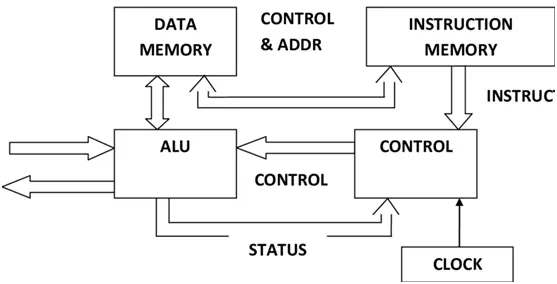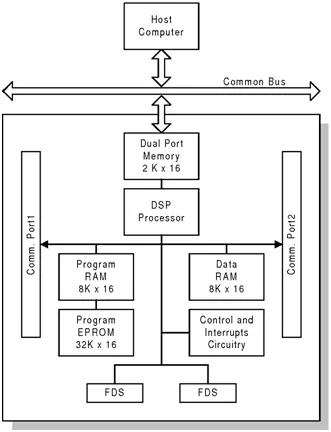1. Introduction
Digital Signal Processing (DSP) is a branch of engineering that focuses on manipulating signals, such as audio, video, temperature, and other data types after converting from analog to digital form. DSP techniques improve signal quality, extract valuable information, and enhance system performance. This field combines electrical engineering, mathematics, and computer science principles to achieve its objectives.
In the context of embedded systems, DSPs are specialized microprocessors designed to handle the mathematical operations required for real-time signal processing. These processors are integral to various applications, including telecommunications, audio processing, medical imaging, and more.
2. The Role of DSPs in Embedded Systems
Embedded systems are computer systems designed to perform dedicated functions within larger mechanical or electrical systems. They are characterized by their constrained computing resources and real-time operation requirements. DSPs are critical in these systems because they provide the computational power to process signals efficiently and accurately in real-time.
Due to performance limitations, DSPs enable embedded systems to handle complex algorithms that would be impractical to run on general-purpose microprocessors. By integrating DSPs, embedded systems can achieve higher performance, reduced latency, and improved energy efficiency.
3. Architecture of Digital Signal Processors
The architecture of a DSP is tailored to optimize the performance of signal processing algorithms. Key architectural features include:
Harvard Architecture
DSPs often utilize a Harvard architecture, which separates the data and instruction buses. This allows simultaneous access to program instructions and data, enhancing throughput and speed. The Harvard architecture contrasts with the Von Neumann architecture, where a single bus handles instructions and data, potentially leading to bottlenecks.
Pipeline Architecture
Pipeline architecture is another common feature in DSPs. Pipelining divides the processing task into several stages, each stage concurrently performing a part of the computation. This increases instruction throughput and efficiently uses the processor’s resources, leading to higher performance.
4. Key Features of DSPs
DSPs are distinguished by several specialized features that make them well-suited for signal-processing tasks:
Multiplier-accumulator (MAC) Units
MAC units are critical for DSP operations as they efficiently perform multiplication and accumulation operations. These units are optimized to handle the frequent multiply-accumulate operations in many signal processing algorithms, such as digital filtering and Fourier transforms.
Specialized Instruction Sets
DSPs feature instruction sets designed to accelerate standard signal-processing tasks. These instructions might include operations for convolution, correlation, and Fast Fourier Transform (FFT), allowing DSPs to execute these tasks faster than general-purpose processors.
Parallel Processing Capabilities
DSPs often support parallel processing through SIMD (Single Instruction, Multiple Data) and VLIW (Very Long Instruction Word) architectures. SIMD allows a single instruction to process multiple data points simultaneously, while VLIW enables the execution of multiple instructions in parallel. These capabilities significantly boost signal processing workloads’ performance.
5. DSP Programming and Development Tools
Programming DSPs requires a combination of low-level and high-level programming skills. The primary tools and languages used include:
Assembly Language and High-Level Languages
DSPs can be programmed using assembly language for maximum control over hardware and optimization. However, high-level languages like C and C++ are commonly used to improve development efficiency and portability. These high-level languages often come with DSP-specific libraries that optimize standard algorithm implementations.
Integrated Development Environments (IDEs)
Several IDEs support DSP development, offering code editing, debugging, and performance analysis tools. Examples include Texas Instruments’ Code Composer Studio and Analog Devices’ VisualDSP++. These environments provide a suite of utilities tailored to DSP development, facilitating efficient coding and optimization.
6. Applications of DSPs in Embedded Systems
Due to their robust processing capabilities, DSPs are employed in many embedded system applications. Some critical applications include:
Audio and Speech Processing
DSPs are used extensively in audio and speech processing applications. They enable real-time audio effects, noise reduction, echo cancellation, and voice recognition. In consumer electronics, DSPs power devices like smartphones, hearing aids, and smart speakers.
Image and Video Processing
DSPs handle tasks such as compression, decompression, enhancement, and object recognition in image and video processing. They are essential in digital cameras, video conferencing systems, and surveillance equipment, where high-speed, real-time processing is crucial.
Communications Systems
DSPs are vital in communications systems, including cellular networks, wireless communication, and satellite systems. They perform modulation, demodulation, error correction, and data compression, ensuring reliable and efficient data transmission.
7. Advantages and Challenges of Using DSPs
Performance Benefits
The primary advantage of using DSPs in embedded systems is their superior performance for signal processing tasks. Their specialized architecture allows for efficient execution of complex algorithms, providing higher speed and accuracy than general-purpose processors.
Power Consumption Considerations
While DSPs offer high performance, power consumption can be a concern, especially in battery-powered devices. Manufacturers often design DSPs with power-saving modes and optimization techniques to balance performance and energy efficiency.
Development Complexity
Developing applications for DSPs can be complex due to the need for specialized knowledge in signal processing and hardware optimization. However, advancements in development tools and high-level programming support mitigate these challenges, making DSP development more accessible.
8. Future Trends in DSP Technology
The future of DSP technology is dynamic, with several emerging trends poised to reshape the landscape of digital signal processing in embedded systems. These advancements are driven by the increasing demand for real-time data processing, the proliferation of IoT devices, and the need for more sophisticated and efficient signal-processing techniques.
Integration with AI and Machine Learning
One of the most significant trends is the integration of DSPs with artificial intelligence (AI) and machine learning (ML) technologies. As AI and ML become more pervasive in various applications, there is a growing need for processors that can handle these advanced computational tasks efficiently. DSPs are well-suited for this integration due to their ability to perform high-speed mathematical operations, which are essential for AI algorithms.
(With DSP, we use a neural network to convert a user’s input into complex DSP controls that can produce more realistic signals. This input could be any form of control signal, including features extracted from audio itself.)
For example, in speech recognition and natural language processing applications, DSPs can accelerate the processing of neural network models, enabling faster and more accurate voice-activated systems. Similarly, in computer vision, DSPs can enhance the performance of object detection and image recognition tasks, making them crucial for applications such as autonomous vehicles and intelligent surveillance systems.
Enhanced Energy Efficiency
Energy efficiency remains a critical concern for embedded systems, particularly battery-powered devices like smartphones, wearables, and IoT sensors. Future DSPs will focus on achieving higher performance while minimizing power consumption. This balance is essential to extending the battery life of portable devices and reducing the energy footprint of large-scale deployments.
Manufacturers are exploring several approaches to improve energy efficiency, including advanced power management techniques, dynamic voltage and frequency scaling (DVFS), and the development of ultra-low-power DSP architectures. These innovations will enable DSPs to deliver the necessary performance for demanding applications without compromising power efficiency.
Advancements in Process Technology
The semiconductor industry continues to push the boundaries of process technology, leading to smaller, faster, and more efficient DSPs. With the transition to smaller process nodes, such as 7nm and 5nm technologies, DSPs can achieve higher clock speeds, increased transistor densities, and lower power consumption. These advancements will result in more powerful DSPs handling even more complex signal-processing tasks.
Additionally, 3D stacking and heterogeneous integration are emerging as promising techniques to further enhance the capabilities of DSPs. By stacking multiple layers of processors and integrating different types of cores (e.g., DSP, CPU, GPU) on a single chip, these technologies can significantly boost performance and efficiency, paving the way for next-generation embedded systems.
Increased Connectivity and IoT Integration
As the Internet of Things (IoT) continues to expand, DSPs need to support a wide range of connectivity standards and protocols. Future DSPs will feature enhanced support for wireless communication technologies, such as 5G, Wi-Fi 6, and Bluetooth 5.0, enabling seamless connectivity for IoT devices.
Moreover, DSPs will play a crucial role in edge computing, where data is processed locally at the network’s edge rather than in centralized data centers. By processing data in real time and reducing the need for data transmission to the cloud, DSPs can significantly improve the responsiveness and efficiency of IoT systems. This capability is significant for applications requiring low latency, such as industrial automation, smart cities, and telemedicine.
Security and Reliability Enhancements
With the increasing reliance on DSPs in critical applications, ensuring the security and reliability of these processors is paramount. Future DSPs will incorporate advanced security features to protect against cyber threats and ensure the integrity of processed data. These features may include hardware-based encryption, secure boot processes, and real-time monitoring for malicious activities.
Also, fault tolerance and reliability will be critical considerations, especially for aerospace, defense, and medical device applications, where system failures can have severe consequences. Future DSPs will be designed with robust error detection and correction mechanisms and redundant architectures to ensure continuous operation even in the presence of faults.
9. Conclusion
Digital Signal Processors have established themselves as a cornerstone of embedded systems, offering unparalleled real-time signal processing capabilities across various applications. Their specialized architectures, high-performance instruction sets, and ability to handle complex mathematical operations make them indispensable for tasks ranging from audio and video processing to communications and industrial automation.
As we look to the future, DSP technology is set to undergo significant transformations. Integrating AI and machine learning will open new avenues for intelligent data processing, while advancements in process technology and energy efficiency will enhance the performance and sustainability of DSPs. Moreover, the increasing demand for connectivity and security in IoT applications will drive the development of more versatile and resilient DSPs.
These trends highlight the ongoing evolution of DSPs and their critical role in shaping the future of embedded systems. By staying at the forefront of these advancements, DSPs will continue to enable innovative solutions, drive technological progress, and address the ever-growing demands of modern applications. As a result, they will remain a pivotal component in the quest to create more innovative, efficient, and connected systems across various industries.




